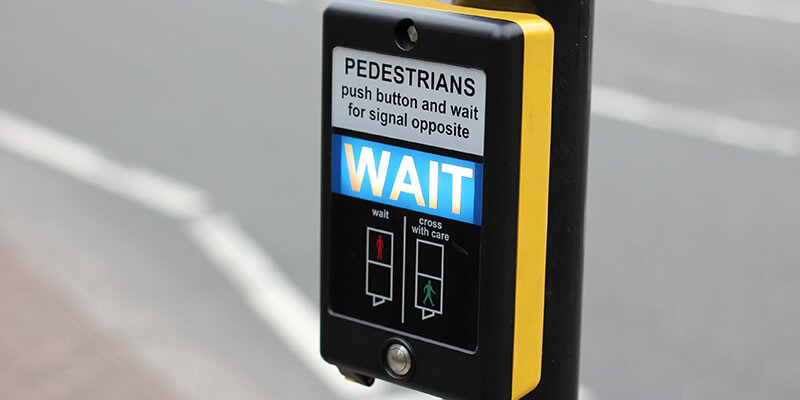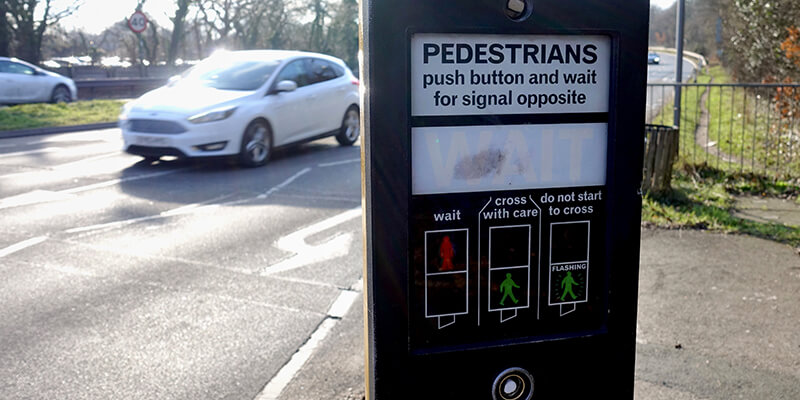Previously known as a PELICON crossing (a blended abbreviation of PEdestrian LIght CONtrolled), the pelican was first introduced to UK roads in 1969. It incorporates traffic lights to signal to drivers and a push button on either side of the road for pedestrians. As standard, the crossing is 2.8 metres wide. Pedestrians press a button at the side of the crossing, and after an interval, the traffic lights change from green to red, signalling for drivers to stop. When a green walking person symbol lights up to replace the red stationary person symbol on the far side of the road, it is safe to cross. The green person will start to flash after a predetermined amount of time. This will coincide with a flashing amber light for the drivers signalling that they can proceed if the crossing is clear. In 2016, the Department for Transport updated the Traffic Signs Regulations and General Directions to advise that new pelican crossings should not be installed on public highways. While thousands of pelican crossings remain in use throughout the country, most new crossings today are puffins, with some exceptions where nearside signals are dangerous.

How do pedestrians cross at a pelican crossing?
Walk up to the crossing and press the button on the control panel mounted on a post. The panel should light up in amber with the word ‘wait’ once the button has been pressed. The pedestrian should then look across the road where a light signal shows a red stationary person. Once that signal changes to a steady green person, check that traffic has stopped and begin crossing the road. After a set interval, the green man will begin to flash. If you are already crossing then you should continue to the other side of the road. If the green person is flashing when you arrive, you should not begin crossing. Instead, push the button and wait for the next cycle.
How should drivers approach a pelican crossing?
Drivers should treat the traffic lights at a pelican crossing like any other traffic signal. They should approach with caution, slow down when they see an amber light and stop when the light turns red. When the amber light begins to flash, drivers can proceed only if there are no pedestrians on the crossing. If someone is on the crossing when the lights are flashing, the driver should wait until they have reached the other side of the road before moving off.

